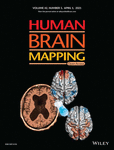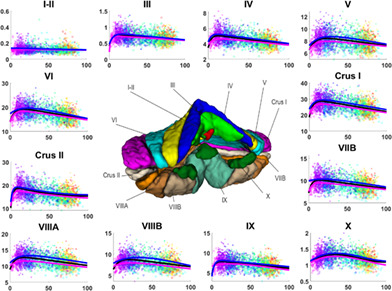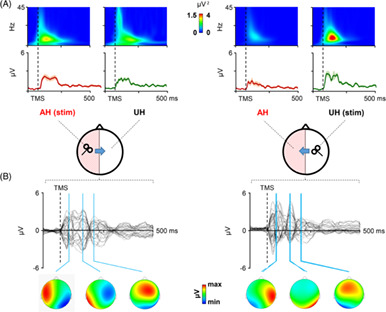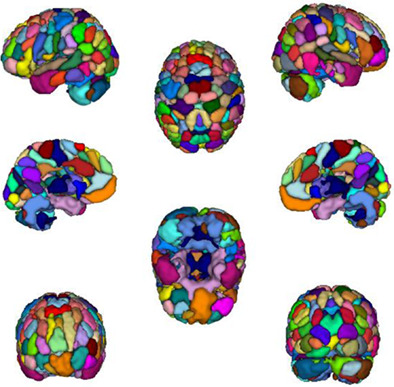Journal list menu
Export Citations
Download PDFs
COVER IMAGE
Cover Image
- First Published: 03 March 2021
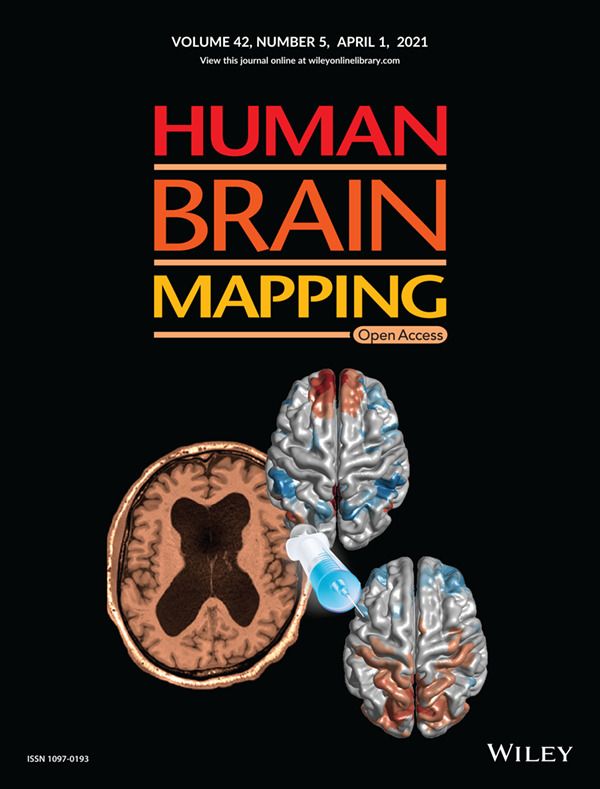
COVER ILLUSTRATION Idiopathic Normal Pressure Hydrocephalus (iNPH), the leading cause of reversible dementia in ageing, is currently underdiagnosed and poorly understood. Using functional brain imaging and molecular data, Griffa et al. demonstrate an alteration of Default Mode Network resting-state dynamics in iNPH patients compared to healthy controls. These functional changes explain iNPH symptoms, are not driven by Alzheimer's disease pathology and are reverted by a CSF tap test through lumbar puncture. These findings demonstrate short-term brain plasticity mechanisms after an invasive treatment and have possible implications for iNPH differential diagnosis and care management.
ISSUE INFORMATION
RESEARCH ARTICLES
Behavioral and neurophysiological signatures of interoceptive enhancements following vagus nerve stimulation
- Pages: 1227-1242
- First Published: 16 December 2020

We tested cardiac interoception after noninvasive vagal nerve stimulation (nVNS). Cervical nVNS increased interoceptive accuracy and underlying neural modulations. Instead, cervical nVNS had no impact on somatosensory heartbeat perception. This supports the key role of the vagal pathway for neurovisceral integration.
Social cognition in the blind brain: A coordinate-based meta-analysis
- Pages: 1243-1256
- First Published: 15 December 2020
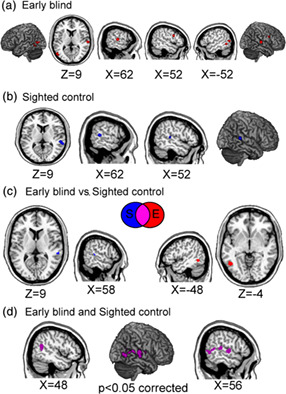
Social cognition skills are typically acquired on the basis of visual information. Here we provide a meta-analysis of neuroimaging studies reporting brain activations associated to the representation of self and others' in early blind individuals and in sighted controls. Our results indicate that early blindness does not critically impact on the development of the “social brain,” with social tasks performed on the basis of auditory or tactile information driving consistent activations in nodes of the action observation network, typically active during actual observation of others in sighted individuals.
Questioning the role of amygdala and insula in an attentional capture by emotional stimuli task
- Pages: 1257-1267
- First Published: 20 November 2020
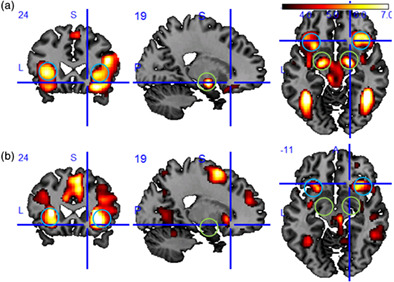
A core aspect of evolutionary survival is the ability to detect potential dangers and procreation opportunities. How the brain processes such emotionally salient distractors is a long-standing debate within cognitive neuroscience and addressed by many neuroimaging studies. While the amygdala is often regarded as a pivotal region in this context, our study emphasizes the role of the insula based on the observation that insula but not amygdala activity is correlated with reaction times in an attentional capture by emotional stimuli task. Lack of methodological sensitivity and stimulus selection are shown to be severe limitations for the interpretation of neuroimaging data.
Along-tract statistics of neurite orientation dispersion and density imaging diffusion metrics to enhance MR tractography quantitative analysis in healthy controls and in patients with brain tumors
- Pages: 1268-1286
- First Published: 04 December 2020
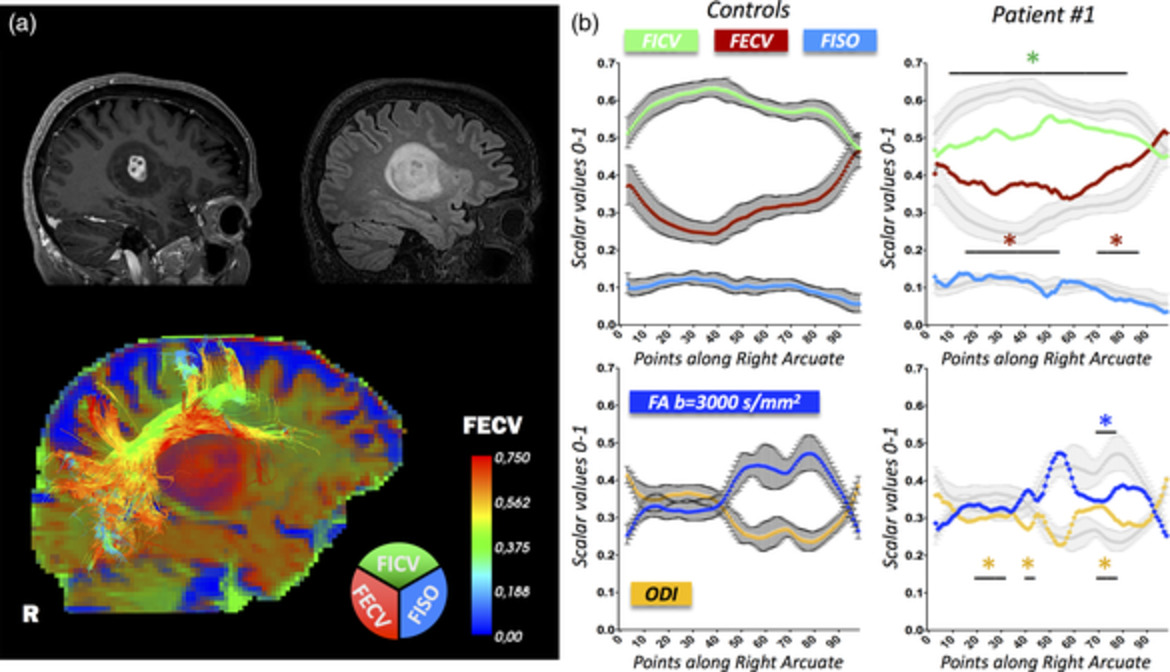
Neurite orientation dispersion and density imaging (NODDI)- and diffusion tensor imaging (DTI)-metrics extracted along white matter fascicles reflect tract-specific microstructure and integrity. Along-tract metrics from brain tumor patients were compared to a intrastudy reference database in order to highlight pathological white matter alterations in the peritumoral fascicles. NODDI-metrics reflected pathological microstructural changes of the peritumoral tissue more accurately than DTI-derived ones, and are more useful to disentangle the different contributions of tissue compartments to the diffusion signal.
Toward a unified analysis of cerebellum maturation and aging across the entire lifespan: A MRI analysis
- Pages: 1287-1303
- First Published: 01 January 2021
Super-variants identification for brain connectivity
- Pages: 1304-1312
- First Published: 24 November 2020

The unique and important challenge in detecting associations between brain connectivity and genetic variants is that the phenotype is a matrix rather than a scalar. We study a new concept of super-variant for genetic association detection. By applying a novel ranking and aggregation method to the UK Biobank databases, we discovered and verified several replicable super-variants.
Neurophysiological mechanisms underlying motor feature binding processes and representations
- Pages: 1313-1327
- First Published: 25 November 2020
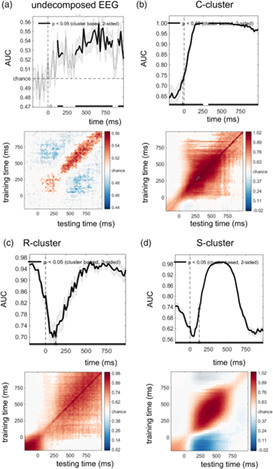
Coherent, voluntary action requires an integrated representation of these actions and their defining features. We examined the underlying neurophysiological mechanisms using EEG recordings and applied standard event-related potential analyses, temporal EEG signal decomposition and multivariate pattern analyses (MVPA). We show that the representation of motor features constituting an action depend on parallel, stimulus- and response-related pre-motor processes in the human motor system and that there is a gradual activation and declines of motor feature representations constituting actions.
Testing the reinforcement learning hypothesis of social conformity
- Pages: 1328-1342
- First Published: 27 November 2020
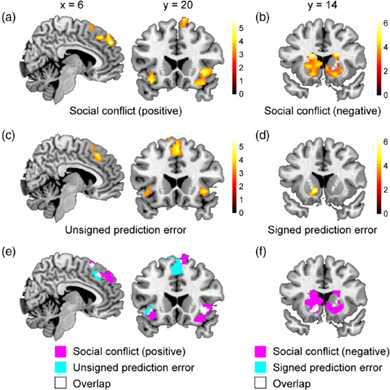
The present study tested the hypothesis that social conformity would share the same neural mechanism as reinforcement learning. While univariate results showed large activation overlaps in the posterior medial frontal cortex (pMFC), anterior insula, and striatum between social conflict and prediction error, multi-voxel pattern analysis (MVPA) showed that their activation patterns within each of these regions were largely distinct rather than similar. The results suggest that the idea that social conformity and reinforcement learning share common neural mechanisms may be too simplistic.
Evidence for interhemispheric imbalance in stroke patients as revealed by combining transcranial magnetic stimulation and electroencephalography
- Pages: 1343-1358
- First Published: 13 January 2021
Musical instrument training program improves verbal memory and neural efficiency in novice older adults
- Pages: 1359-1375
- First Published: 08 December 2020
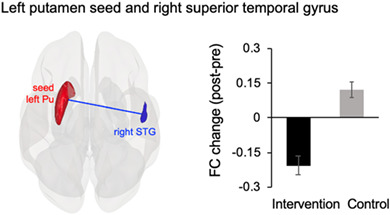
The study demonstrated increased neural efficiency (decreased task-related brain activation and functional connectivity) in older adults after the instrumental training program. Moreover, this was accompanied by improved behavioral performances in non-musical verbal memory. The present findings provide new causal evidence for instrumental training-related plasticity in older adults.
The role of hippocampal theta oscillations in working memory impairment in multiple sclerosis
- Pages: 1376-1390
- First Published: 28 November 2020
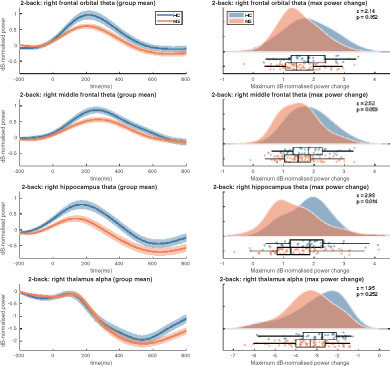
This study is the first to provide neurophysiological evidence of impaired hippocampal WM processing in MS that can be related to WM performance. Our data suggests that impaired theta oscillatory processes in the right hippocampus, supposedly underlying WM encoding, lead to slower reaction times on the task. We also provide evidence that this relationship cannot be accounted for by general MS-related neural damage (specifically hippocampal and white matter damage).
Differential spatial patterns of structural connectivity of amygdala nuclei with orbitofrontal cortex
- Pages: 1391-1405
- First Published: 03 December 2020
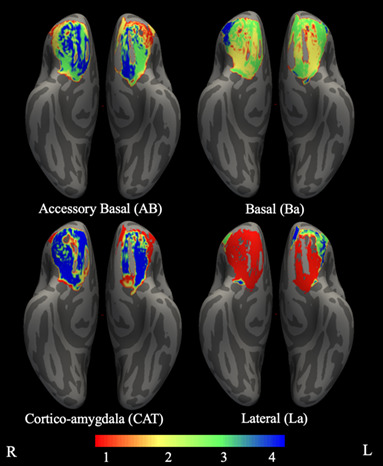
Structural connectivity between regions of orbitofrontal cortex and amygdala nuclei are examined in four conceptually distinct ways, including comparisons of connectivity among amygdala nuclei and the calculation of orbitofrontal cortex spatial maps based upon (a) the likelihood of connectivity with each nucleus and (b) the relative density of connectivity between orbitofrontal cortex and each nucleus. Results converged to reveal differential patterns of connectivity between orbitofrontal cortex and each amygdala nucleus.
White matter integrity and structural brain network topology in cerebral small vessel disease: The Hamburg city health study
- Pages: 1406-1415
- First Published: 08 December 2020
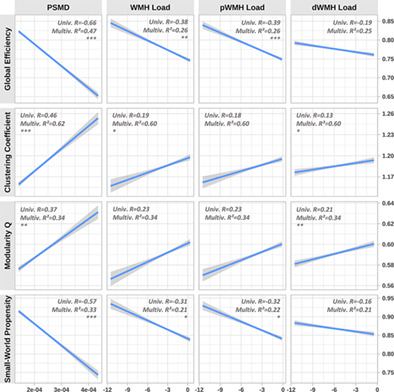
Even in rather healthy subjects increased cerebral small vessel disease burden is accompanied by topological brain network disturbances. Besides the known mediation effect of integration parameters, the segregation parameters might as well contribute to the understanding of the known clinical sequelae of cerebral small vessel disease.
Brain parcellation driven by dynamic functional connectivity better capture intrinsic network dynamics
- Pages: 1416-1433
- First Published: 07 December 2020
Individual differences in interoceptive accuracy and prediction error in motor functional neurological disorders: A DTI study
- Pages: 1434-1445
- First Published: 07 December 2020
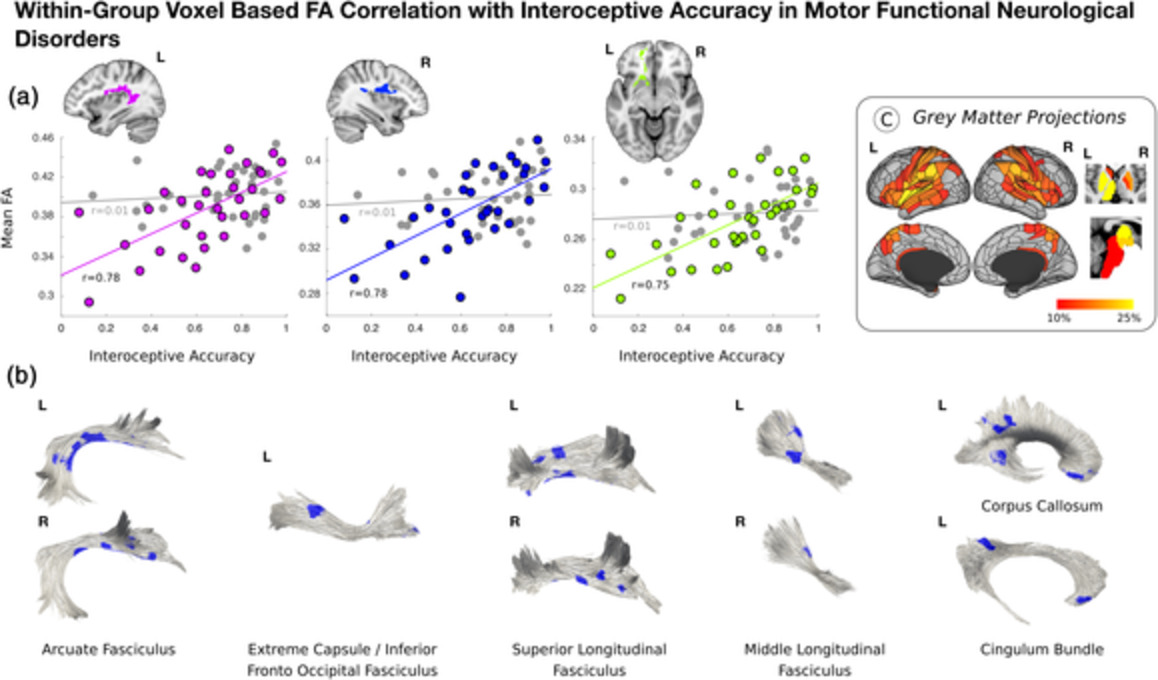
In this first study investigating brain-interoception relationships in mFND, individual differences in interoceptive accuracy and trait prediction error mapped onto multimodal integration-related fiber bundles. Right-lateralized limbic and associative tract disruptions distinguished FND-seiz from HCs.
Predicting visual working memory with multimodal magnetic resonance imaging
- Pages: 1446-1462
- First Published: 05 December 2020
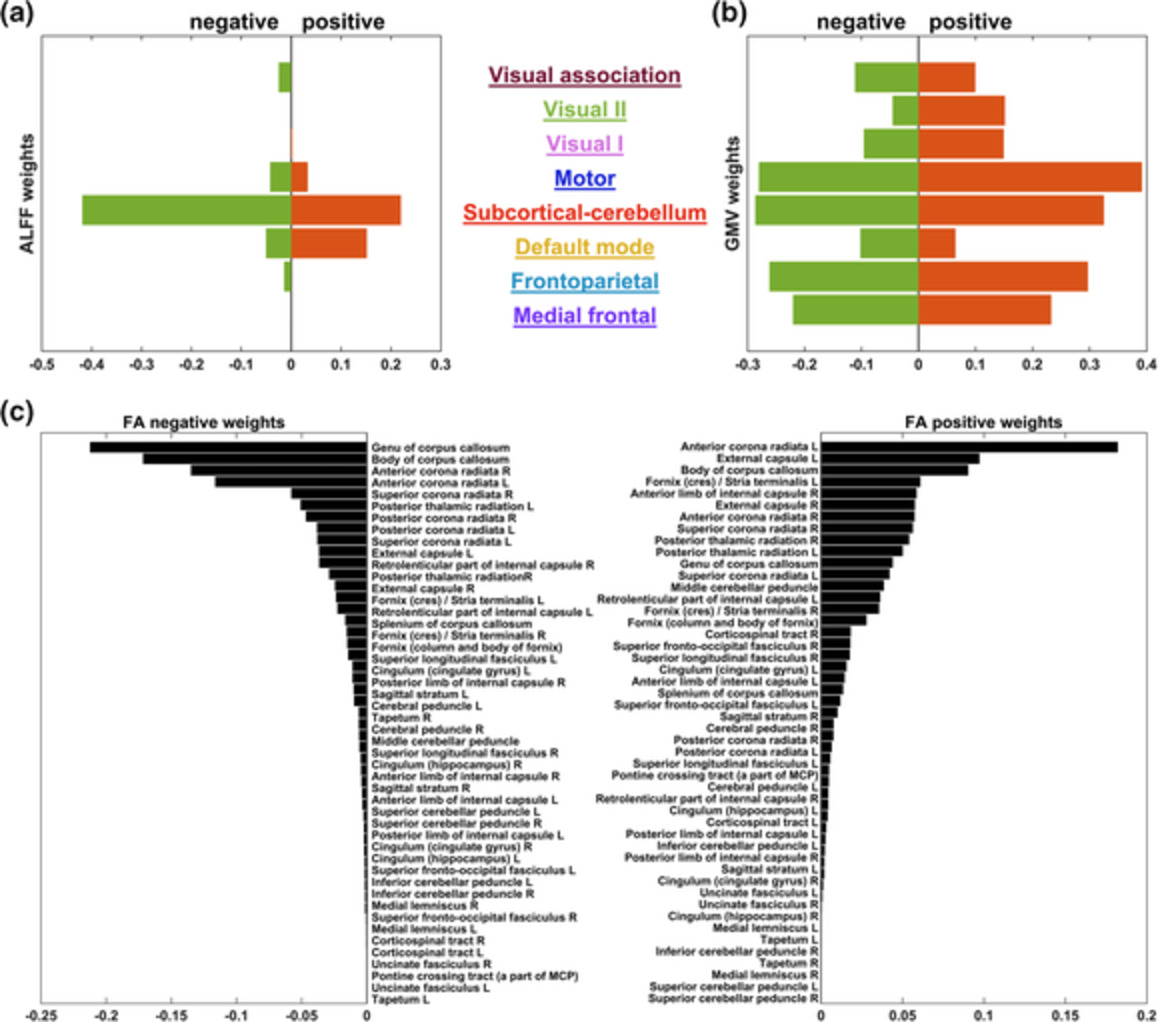
We used multimodal neuroimaging in combination with machine learning to reveal the neural mechanism of visual working memory (VWM) across a large cohort. The resulting model exhibited promising predictive performance on VWM (r = .402, p < .001), and identified features within the subcortical-cerebellum network, default mode network, motor network, corpus callosum, anterior corona radiata, and external capsule as significant predictors. Our findings, while providing richer evidence for the importance of multimodality in understanding cognitive functions, offer a solid and general foundation for comprehensively understanding the VWM process from the top down.
Decreasing brain iron in multiple sclerosis: The difference between concentration and content in iron MRI
- Pages: 1463-1474
- First Published: 30 December 2020

Increased brain iron concentration is often reported concurrently with disease development in multiple sclerosis (MS) and other neurodegenerative diseases. The study showed that temporally increasing magnetic susceptibility in MS should not be considered as evidence for iron influx because it may be explained, at least partially, by disease-related atrophy. Declining deep gray matter iron content suggests that, contrary to the current understanding, iron is being removed from the deep gray matter in patients with MS.
Individual-specific functional connectome biomarkers predict schizophrenia positive symptoms during adolescent brain maturation
- Pages: 1475-1484
- First Published: 02 December 2020
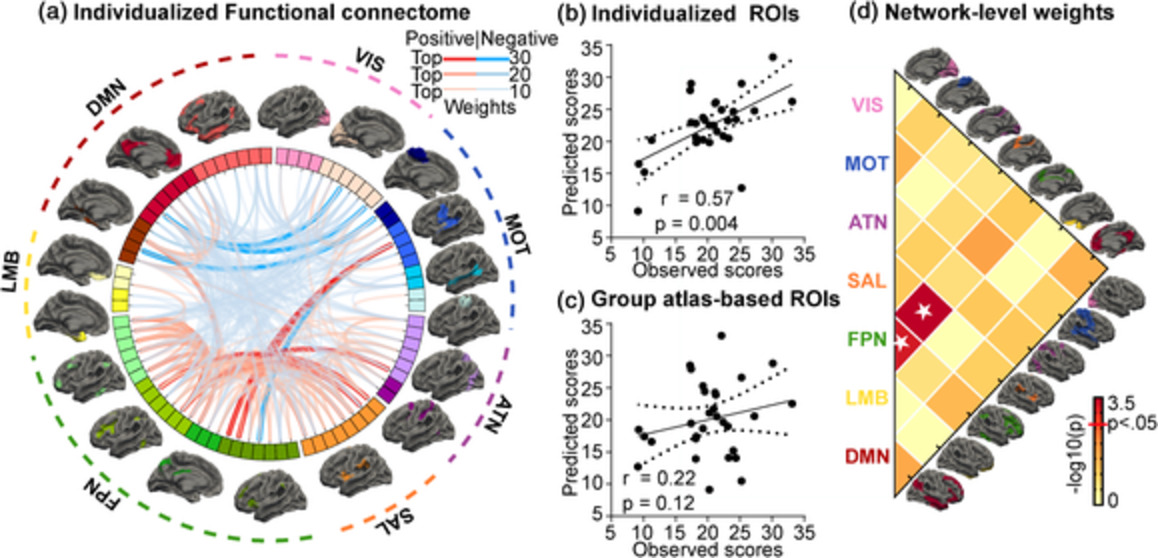
Reliable frontoparietal control network-based functional connectome biomarkers underlying positive symptom domains could be identified at the individual level, but not at the group level. Replication results indicated relatively better generalization ability of the prediction model by using individual-based strategy compared with group-level approach.
Dynamic functional networks in idiopathic normal pressure hydrocephalus: Alterations and reversibility by CSF tap test
- Pages: 1485-1502
- First Published: 09 December 2020
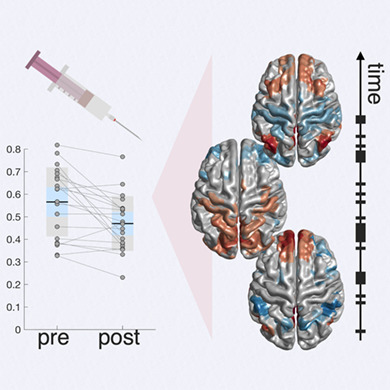
Idiopathic normal pressure hydrocephalus (iNPH), the leading cause of reversible dementia in ageing, is a prevalent neurological disorder characterised by gait, urinary, and cognitive impairments with ventriculomegaly. We show that iNPH patients have changes of brain functional dynamics which explain gait and executive deficits, are partially reverted by a CSF tap test, and are not driven by Alzheimer's disease or cerebrovascular comorbidities. Our results shed new light on the neurobiological substrates of iNPH and functional plasticity mechanisms following an invasive intervention, with possible implications for iNPH differential diagnosis and better clinical management.
Categorizing human vocal signals depends on an integrated auditory-frontal cortical network
- Pages: 1503-1517
- First Published: 08 December 2020
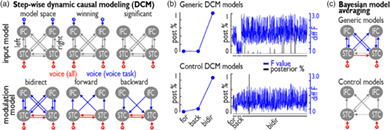
Neuronal computations underlying task-related and behaviorally relevant vocal/nonvocal-sound discriminations are still unclear as previous studies focused on passive listening designs. In this study, using fMRI and a task-based design in 29 participants we demonstrated an integrated network of auditory and higher-order frontal regions for behaviorally relevant vocal/nonvocal discriminations. Importantly, the inferior frontal cortex was only part of the network when the vocal dimension was relevant for the ongoing task.
Probing the role of the right inferior frontal gyrus during Pain-Related empathy processing: Evidence from fMRI and TMS
- Pages: 1518-1531
- First Published: 07 December 2020
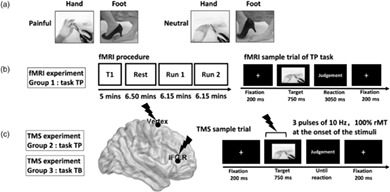
- fMRI results demonstrated stronger activation in the right inferior frontal gyrus (rIFG; BA 45) during the perception of pain in others.
- TMS provided supporting evidence that participants whose rIFG regions were temporarily disrupted perceived pain in others significantly more slowly.
- Thus, the rIFG is sensitive to pain in empathy; this provides insights into how the brain extracts and processes information about pain in others.
Unique deficit in embodied simulation in autism: An fMRI study comparing autism and developmental coordination disorder
- Pages: 1532-1546
- First Published: 15 December 2020
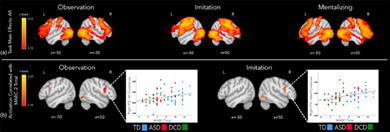
By comparing children with autism spectrum disorder (ASD) to children with developmental coordination disorder (DCD), we aim to disentangle motor-related from social-related neural deficits in ASD. The results indicate that during action observation, the ASD group uniquely shows hypoactivity of the inferior frontal gyrus, a region important for implicit social cognition.
Stimulus transformation into motor action: Dynamic graph analysis reveals a posterior-to-anterior shift in brain network communication of older subjects
- Pages: 1547-1563
- First Published: 11 December 2020

In this article, we performed an analysis of dynamic networks based on synchronization in the delta-theta frequency range in the context of stimulus processing and motor execution in order to understand the neural mechanisms underlying HAROLD and PASA. We were able to demonstrate a similar structure as has been shown in self-initiated movements indicating an independence of the underlying neural mechanisms on movement initiation: The networks in older subjects displayed an overall increased connectivity, especially in motor related electrodes by establishing significantly more interhemispheric connections which is consistent with the HAROLD model. In addition, we could show that the flexibility in the networks of older subjects decreased, indicating a kind of over-connectivity and resulting difficulties in recruiting task specific regions. Finally, an analysis of the HUB nodes, that is, the neural information flow revealed an extended stimulus processing in occipital regions and a detour via frontal regions in older subjects, which is compatible with the PASA phenomenon.
ERRATUM
Erratum: Exploring the impact of analysis software on task fMRI results
- Pages: 1564-1578
- First Published: 14 December 2020




